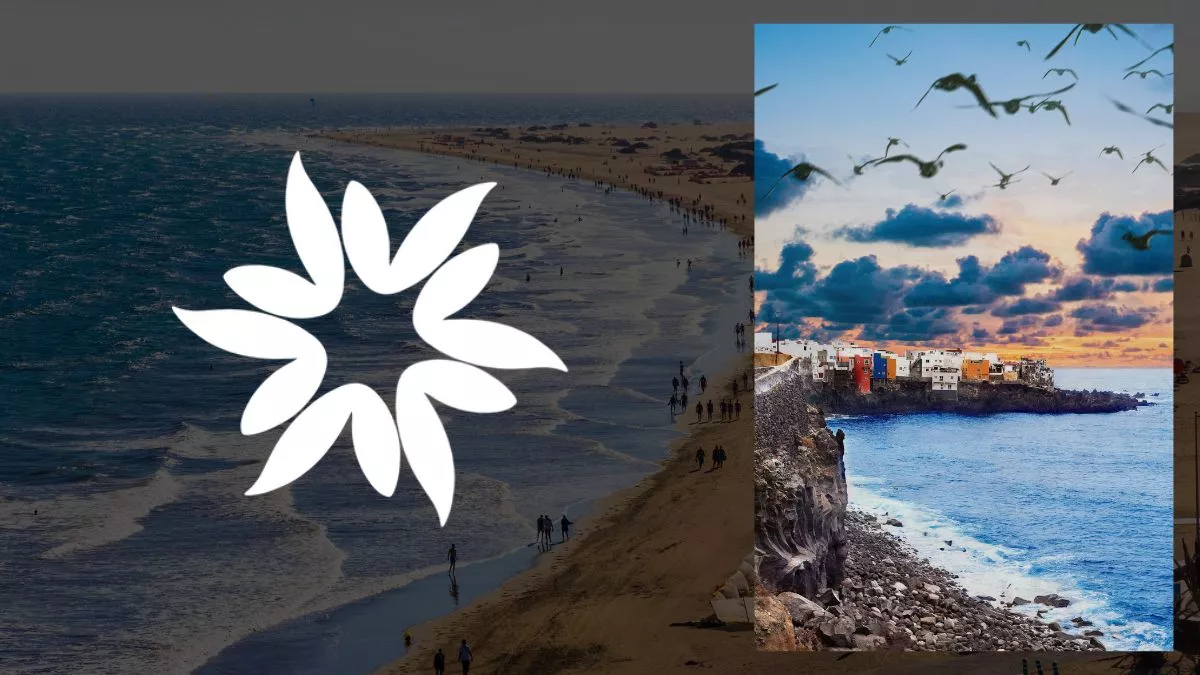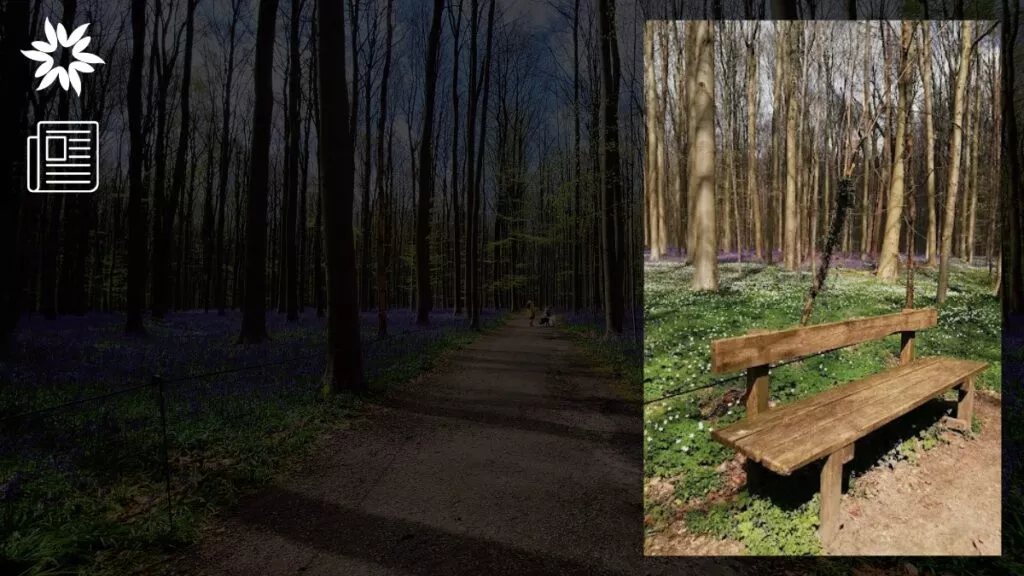So, you’re thinking about your next big trip but unsure where to go? Let me tell you, the Canary Islands should be at the top of your list.
In all honesty, the Canary Islands are one of those places where you can have it all. Adventure, relaxation, culture—it’s all here.
So, why not make this your next destination? Once you get a taste of island life here, you’ll wonder why you didn’t come sooner.
But before you go, let’s make sure you’re fully prepared!
Best Time to Visit the Canary Islands
The Canary Islands are a great place to visit any time of the year because of their warm, subtropical weather.
But the best time for your trip depends on what you want to do—whether it’s hitting the beach, exploring the outdoors, or attending local festivals.
Winter (December to February)
Winter in the Canary Islands is pretty mild, making it a popular getaway if you’re looking to escape the chilly European weather. Daytime temperatures are usually around 20°C (68°F), though it can get cooler at night.
It’s a perfect season for outdoor activities like hiking, biking, and wandering around the island’s picturesque towns without worrying about the heat.
Not to mention, winter is also packed with cultural events, especially the famous Carnival in February, particularly in Tenerife and Gran Canaria.
Winter is a fantastic time to visit if you’re after a vibrant atmosphere with lots to do. Just keep in mind it’s a busy season, so you’ll likely run into more crowds and higher prices.
Spring (March to May)
Spring is often considered one of the best times to visit the Canary Islands.
That’s likely the case because the weather is warm but not too hot, making it ideal for outdoor adventures like hiking in the national parks, checking out the volcanic landscapes, or simply relaxing on the beaches.
Without a doubt, the crowds are smaller compared to summer, and prices are more wallet-friendly.
Plus, the islands come alive with blooming flowers, making the scenery even more beautiful.
So, spring is a top pick if you’re looking for a peaceful getaway with nice weather.
Summer (June to August)
Summer is the peak season in the Canary Islands, especially from June to August. The weather gets hot, often hitting 30°C (86°F), perfect for beach and water sports lovers.
The sea is warm, and the beaches buzz with tourists from all over Europe. However, the heat also brings bigger crowds, so if you’re planning a summer trip, be ready for busy attractions and make sure to book your stay early.
Summer is the season that has more festivals and events than others, so you’ll never run out of things to do.
Fall (September to November)
Fall is another great time to visit the Canary Islands. By then, the summer crowds thin out, but the weather stays warm and comfortable.
And, this is the season of the wine harvest, so it’s a great chance to visit local vineyards and indulge in wine tasting.
With fewer tourists, the islands feel more relaxed, and prices drop, making it a more budget-friendly option.
And don’t worry, the sea is still warm so you can enjoy beach activities without the summer rush.
What’s the Best Canary Island To Visit in 2024?
With so many incredible islands to visit, how do you decide which one is right for you?
Well, next up, we’re about to walk you through the highlights of the best Canary Islands so you can choose the perfect one.
If there’s one thing for sure, there’s something here for everyone, and once you find your ideal spot, you’ll be counting down the days until you can soak up that island sun.
1. Tenerife
Tenerife, the biggest and most diverse of the Canary Islands, is perfect if you’re looking to combine adventure with some chill time.
It must be mentioned that the island has it all—stunning beaches, towering mountains, and many activities to keep you entertained.
What to Do:
- Mount Teide National Park: You can’t miss Mount Teide, Spain’s highest peak. Whether you hike up or take the cable car, the views are absolutely stunning.
The park is a UNESCO World Heritage Site with a unique volcanic landscape that’s a blast to explore.
- Beaches and Water Sports: Tenerife’s beaches are top-notch. For lively nightlife, head to Playa de las Américas, packed with bars, clubs, and restaurants.
If you’re into windsurfing or kiteboarding, El Médano’s steady winds make it the perfect spot for those sports.
- Whale and Dolphin Watching: The waters around Tenerife are some of the best in Europe for spotting whales and dolphins.
Plenty of tours on the south coast will get you up close to these fantastic creatures.
- Anaga Rural Park: If you’re into lush greenery and hiking, Anaga Rural Park in the northeast is a hidden gem.
This ancient forest has trails that offer incredible views of the rugged coastline and deep ravines.
- Cultural Experiences: Don’t miss the historic town of La Laguna, a UNESCO World Heritage site known for its well-preserved colonial architecture and vibrant cultural scene. It’s also a great spot to try some local Canarian dishes.
2. Gran Canaria
Gran Canaria is a fantastic choice for families and anyone who likes to do a bit of everything—from relaxing on the beach to exploring a variety of landscapes.
What to Do:
- Maspalomas Dunes: These iconic golden sand dunes are a must-see. You can explore them on foot or even take a camel ride, which is a fun adventure for the whole family.
They’re near Playa del Inglés, one of the island’s most popular beaches.
- Puerto de Mogán: Often called “Little Venice,” this charming seaside town is perfect for a romantic stroll.
The canals, whitewashed houses, and colorful flowers create a relaxed vibe that couples love.
- Family-Friendly Beaches: The southern beaches, like Playa de Amadores and Puerto Rico, have calm waters that are great for families with young kids.
Plus, these areas are full of restaurants, shops, and activities to keep everyone entertained.
- Explore the Mountains: Venture inland to Gran Canaria’s rugged mountains. The island’s landscapes range from pine forests to volcanic craters.
Hiking in Tamadaba Natural Park is a great way to soak in the natural beauty.
- Las Palmas: The capital, Las Palmas, is perfect if you like the beach and city life.
You can enjoy urban beaches like Playa de Las Canteras and dive into the vibrant cultural scene with museums, galleries, and historic neighborhoods like Vegueta.
3. Lanzarote
Lanzarote is unlike any other Canary Island, known for its dramatic volcanic scenery and rich cultural feel.
If you love nature and art, Lanzarote is a dream destination where these two elements beautifully combine.
Things to Do:
- Timanfaya National Park: This park is a must-see if you’re interested in Lanzarote’s volcanic past.
Why not hop on a guided bus tour to explore the otherworldly landscape of craters and lava fields? And you can’t miss the cool demonstration where they use the Earth’s geothermal heat to cook food at the park’s restaurant, El Diablo.
- César Manrique Foundation: The island’s look and feel owe much to César Manrique, a local artist and architect.
You can even visit his former home, now the César Manrique Foundation. The house is carved right into ancient lava bubbles, showing how Manrique creatively embraced Lanzarote’s volcanic terrain in his designs.
- Jameos del Agua: Another of Manrique’s masterpieces, Jameos del Agua, is a series of lava caves turned into a stunning cultural space.
Here, you’ll find a concert hall, a restaurant, and an underground saltwater lagoon.
- Wine Tasting in La Geria: You wouldn’t expect it, but Lanzarote’s volcanic soil is excellent for growing grapes, especially the Malvasia grape.
Take a trip to La Geria, the island’s wine region, to sample wines grown in volcanic craters.
It has to be said that the landscape, with its black ash fields and green vines, is something you have to see.
- Rancho Texas Park: If you’re traveling with kids, Rancho Texas Park in Puerto del Carmen is a hit.
It’s got everything from animal encounters to live shows and water fun. The kids can enjoy pony rides, splash around, and see all sorts of animals, from birds of prey to reptiles.
- Beaches and Water Activities: Lanzarote has some stunning beaches, like Playa Papagayo, famous for its golden sands and clear waters—a fantastic spot for swimming, snorkeling, and soaking up the sun.
4. Fuerteventura
For beaches and watersports, Fuerteventura is the place to be. With endless white sand beaches and crystal-clear waters, there’s no better place to kick back or get your adrenaline pumping with water-based fun.
Things to Do:
- Corralejo Natural Park: Located north of Fuerteventura, this park is known for its massive sand dunes that stretch along the coast.
It’s perfect for sunbathing, picnicking, and enjoying the island’s natural beauty. Plus, the nearby town of Corralejo has a lively nightlife and great places to eat.
- Cofete Beach: For a more off-the-beaten-path beach experience, check out Cofete Beach on the island’s southwestern coast.
It’s remote, wild, and often called one of Spain’s most beautiful beaches. Though driving there is a bit rough, the untouched beauty makes it worth it.
- Surfing, Windsurfing, and Kitesurfing: Fuerteventura is a paradise for watersports lovers.
Whether you’re just starting or a pro, you’ll find some of Europe’s best surfing, windsurfing, and kitesurfing spots here. Sotavento Beach is especially famous for hosting international competitions.
- Diving and Snorkeling: The waters around Fuerteventura are crystal clear and perfect for diving and snorkeling.
Check out dive sites like El Bajón del Río or Lobos Island, where you might spot rays, barracudas, and even sea turtles.
- Betancuria: To get a feel for Fuerteventura’s history, visit Betancuria, the island’s old capital.
This charming town, tucked away in a valley, offers a peaceful retreat. It has historic buildings like the Santa María Church and scenic viewpoints like Mirador Morro Velosa.
- Relaxation and Wellness: If your idea of a perfect vacation involves a lot of relaxation, Fuerteventura has you covered.
The island has plenty of luxurious resorts and spas offering wellness programs, yoga, and spa treatments, often with stunning ocean views.
5. La Palma
La Palma, also known as “La Isla Bonita” or “The Beautiful Island,” is a dream come true for anyone who loves nature and hiking.
Unlike some busier Canary Islands, La Palma has stayed untouched, making it a fantastic spot for those who want to experience nature at its best.
What to Do:
- Caldera de Taburiente National Park: This place is the heart and soul of La Palma. Imagine a massive crater surrounded by towering cliffs and lush pine forests—sounds impressive, right?
Several trails lead through the park, where you can enjoy stunning views of waterfalls, unique rock formations, and endless greenery.
If you’re up for a challenge, hike up to “Roque de los Muchachos,” the highest point on the island.
- Bonus: there’s a world-famous observatory at the top for some serious stargazing.
- Stargazing: Speaking of stargazing, La Palma is one of the best places on the planet to do it. The skies are super clear, and there’s almost no light pollution.
The island is a UNESCO Starlight Reserve, and you can join guided tours to learn all about the stars and constellations above you.
- Los Tilos Forest: If you’re into dense, ancient forests, Los Tilos is the place to be.
This lush laurel forest is a UNESCO Biosphere Reserve, and walking through its trails feels like stepping into another world of unique plants and birds.
- Charco Azul: After a long hike, cool off at Charco Azul, one of the island’s most stunning natural swimming pools.
It’s in San Andrés y Sauces, and the crystal-clear water surrounded by dramatic volcanic rocks is the perfect way to relax.
- Santa Cruz de La Palma: Make sure to explore the island’s charming capital, Santa Cruz de La Palma.
This little town is packed with colorful colonial buildings, cobblestone streets, and cool historic sites like the Church of El Salvador and a Naval Museum replicating one of Christopher Columbus’s ships.
6. La Gomera
If you need to escape it all, La Gomera is the island to visit. Smaller and quieter than its neighbors, this place is all about relaxing, soaking in stunning natural beauty, and enjoying life at a slower pace.
What to Do:
- Garajonay National Park: The star of La Gomera is Garajonay National Park, a UNESCO World Heritage Site. This park is home to one of the last laurel forests on Earth, a subtropical rainforest that used to cover much of Southern Europe.
The well-marked trails here range from easy walks to more challenging hikes through misty forests, all leading to jaw-dropping viewpoints.
- Valle Gran Rey: This beautiful valley, known as the “Valley of the Great King,” is a top spot on the island.
It’s a peaceful place to kick back, that’s for sure, with terraced landscapes, palm trees, and black sand beaches. Plus, it’s a great base for exploring nearby hiking trails.
- Agulo: Often called the prettiest village in La Gomera, Agulo is a must-see. It’s perched on a cliff with ocean views, and its traditional Canarian houses and winding streets are picture-perfect.
Don’t miss the hike to Mirador de Abrante, a glass viewpoint that offers breathtaking views of the island and the sea.
- San Sebastián de La Gomera: The island’s capital is a small, quiet town with a rich history. Christopher Columbus stopped here before his famous voyage to the New World.
You can visit historic sites like the Torre del Conde, a 15th-century tower, and the Church of the Assumption, where Columbus is said to have prayed before his journey.
- Playa de Santiago: For a quieter beach day, head to Playa de Santiago on the south coast.
This peaceful fishing village offers a laid-back vibe, delicious seafood, and a lovely pebble beach where you can relax far from the crowds.
7. El Hierro
El Hierro, the smallest and most remote Canary Island, is a hidden gem for those who love to explore off the beaten path.
As a UNESCO Biosphere Reserve, this island screams sustainability with its untouched, rugged beauty. Thus, it’s the ideal spot for anyone looking for peace, stunning nature, and adventure.
What to Do:
- Diving in La Restinga: El Hierro is a paradise if you’re into diving. At the island’s southern tip, the waters around La Restinga are some of the clearest in the Canary Islands, packed with marine life like rays, groupers, and barracudas.
Also, the underwater volcanic formations make the experience even more unique.
- Mirador de La Peña: For breathtaking views, head to Mirador de La Peña. Designed by the famous Canarian artist César Manrique, this viewpoint overlooks the El Golfo Valley and the Atlantic Ocean.
Mirador de la Peña is perhaps the best place to take in the island’s sublime landscapes, where cliffs drop straight into the deep blue sea.
- El Sabinar: Check out El Sabinar, where ancient juniper trees are twisted into incredible shapes by the island’s strong winds.
This is one of El Hierro’s most iconic spots and feels almost magical.
- Hiking the Camino de Jinama: If you’re up for a hike, the Camino de Jinama is a must.
This ancient trail climbs from the El Golfo Valley to the central plateau, offering amazing views. You’ll pass through everything from lush green valleys to rugged volcanic terrain.
- Frontera Rural Park: Another great spot for hiking is Frontera Rural Park. This park has trails that wind through dense laurel forests, volcanic landscapes, and old agricultural terraces.
8. La Graciosa
La Graciosa is the smallest and newest Canary Island, known for its untouched beauty and laid-back vibe.
With no paved roads and only a small population, it’s the perfect escape if you’re looking for peace, quiet, and a break from modern life.
While many people visit as a day trip from Lanzarote, it’s worth staying a few days to soak in the island’s tranquility.
What to Do:
- Beaches: La Graciosa has some of the most pristine beaches in the Canary Islands.
Playa de las Conchas is the star, with golden sands and crystal-clear waters.
It’s great for a chill day by the sea, but be careful—the currents can be strong, so it’s better for sunbathing than swimming.
- Explore by Bike or Foot: Since no cars are on the island, the best way to get around is by bike or on foot.
You can easily rent a bike in Caleta de Sebo, the island’s only village, and explore the many trails. These paths will take you through volcanic landscapes along rugged coastlines and to hidden beaches with stunning views all along the way.
- Caleta de Sebo: This little village is the heart of La Graciosa, with a few restaurants, bars, and shops.
Seafood lovers won’t want to miss out on this gem’s fresh fish, mainly since many of the dishes feature the catch of the day.
- Snorkeling and Swimming: The clear waters around La Graciosa are perfect for snorkeling.
You can spot various fish and marine life, especially in the calm bays like Playa Francesa, which are great for snorkeling and swimming.
- Day Trip to Lanzarote: While La Graciosa is super relaxing, hopping on a ferry to Lanzarote for a day of exploring is easy.
A short boat ride lets you enjoy the buzz of Lanzarote’s attractions before you return to the peacefulness of La Graciosa.
Staying Safe in the Canary Islands
When traveling to the Canary Islands, you’ll want to enjoy every moment without worrying.
To help make sure your trip is as smooth and stress-free as possible, here are some key safety tips to keep in mind:
- Stay Aware: The Canary Islands are pretty safe, but it’s always good to be alert, especially in busy spots like markets or tourist attractions where pickpockets might lurk.
- Keep Your Valuables Secure: Don’t flash your expensive jewelry or large amounts of cash around. It’s better to keep your valuables in a hotel safe or locked in your luggage.
- Use Trusted Taxis: Always use metered taxis or reputable ride-hailing apps. If you hop into a cab without a meter, you should exit and find another to avoid being overcharged politely.
- Be Careful with ATMs: When using ATMs, pick ones in well-lit, secure areas. Make sure to cover your hand when entering your PIN to avoid sneaky skimming attempts.
- Avoid Dark Alleys at Night: Stick to well-lit, populated areas when you’re out at night. It’s wise to avoid shortcuts through dark or empty streets.
- Follow the Beach Flags: Many Canary Island beaches have lifeguards and safety flags. Red means no swimming, yellow means be cautious, and green means go ahead and swim!
- Watch the Ocean Conditions: The waters around the islands can have strong currents, especially on the western and northern coasts. Stick to designated swimming areas; don’t venture too far out if you’re not a strong swimmer.
- Know the Emergency Number: The emergency number in the Canary Islands is 112, which you can use for medical help, fire, or police assistance.
- Stay Hydrated and Use Sunscreen: The Canary Islands are sunny all year round, so drink plenty of water and protect your skin with sunscreen. Make sure to reapply it regularly, especially after swimming.
- Food and Drink Safety: The food in the Canary Islands is generally safe, but stick to reputable places and make sure your food is cooked thoroughly. Tap water is usually safe, but bottled water is easy to find if you prefer.
- Plan Your Hike: The islands are great for hiking, but choose a trail that matches your fitness level. Let someone know your plans before you head out, and if possible, hike with a buddy or in a group.
- Bring the Right Gear: When hiking, carry a map or GPS, plenty of water, and a first aid kit, and wear suitable clothing and shoes. The weather can change quickly, especially in mountainous areas, so be prepared.
- Stick to Marked Trails: To avoid getting lost or hurt, stay on marked trails and be aware of the local wildlife. Follow any warning signs and listen to park rangers’ advice.
- Respect Local Laws: The Canary Islands have specific laws about smoking, drinking, and behavior in public. For example, drinking in public spaces outside designated spots can get you fined.
- Avoid Demonstrations: While protests are usually peaceful, avoiding large gatherings is safer, as they can sometimes turn unpredictable.
- Passport and Visa Requirements: Make sure your passport is valid for at least three months after your planned departure. Most visitors can stay up to 90 days without a visa in the Schengen area, but double-check the entry requirements before you travel.
The Canary Islands Are Calling Your Name!
With all the tips you’ve got now, you’re more than ready to have an amazing adventure.
So, what are you waiting for? Start planning your Canary Islands trip today, and prepare for some serious fun in the sun!
Grab your bags, don’t forget the sunscreen, and let the Canary Islands show you a good time. Your next big adventure is just a flight away!
By the way, if you’re planning more trips, check out the best safest countries to visit in Asia on a budget!








